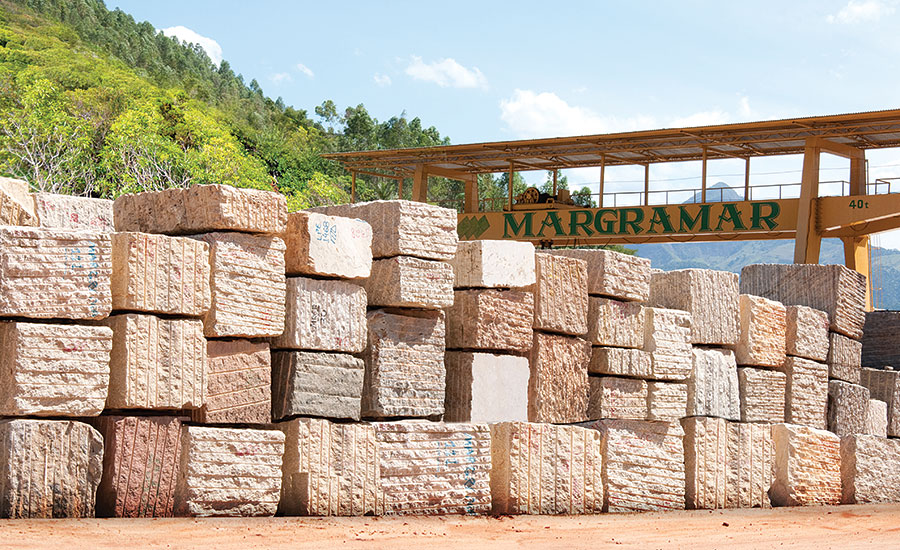Revealing the Mysteries of Granite Quarrying: Where Toughness and Beauty Meet
The world of granite quarrying is a world where the raw toughness of nature converges with human artistry to produce frameworks that stand the examination of time with an air of style. From the depths of quarries to the precise sprucing up in workshops, the procedure of changing granite right into building wonders is a complex dance of practice and development. As we peer right into the depths of this ancient craft, we begin to discover the surprise details that shape the very essence of our built atmosphere.
The Origins of Granite Quarrying
In the record of architectural history, the origins of granite quarrying are shrouded in a tapestry of ancient craftsmanship and geological marvels. Dating back to ancient Egypt and Mesopotamia, the extraction of granite from quarries marked the beginning of a trip that would eventually lead to the creation of some of the world's most famous frameworks.
Granite quarrying's origins can be traced to the proficient craftsmens who acknowledged the stone's durability and aesthetic appeal. Via a mix of primitive devices and sheer decision, these early quarry employees uncovered granite blocks that would certainly end up being the foundation of worlds.
As worlds developed, so did the techniques of quarrying granite. The Romans, renowned for their design expertise, established sophisticated approaches for removing granite to build monuments, holy places, and roadways that stood the test of time.
The heritage of these old quarrying methods continues to form contemporary architecture, with granite remaining an icon of stamina and elegance in building and construction jobs around the globe. (granite quarries in south africa)
Devices of the Quarrying Trade
The advancement of granite quarrying methods from ancient human beings to contemporary times highlights the crucial role played by the devices of the quarrying sell forming the industry's techniques. In ancient times, quarrying devices were simple, often being composed of chisels, hammers, and wedges made from products like bronze or iron. These tools needed significant workforce and time to extract granite obstructs from quarries.

In addition, the intro of pneumatically-driven devices and high-powered machinery has actually significantly reduced the physical labor required in quarrying procedures, boosting employee safety and security and efficiency. As the quarrying industry proceeds to introduce, the devices of the trade stay at the forefront of driving progress and forming the future of granite removal.
Drawing Out Blocks of Granite
Using precision machinery and progressed strategies, the extraction of granite obstructs from quarries has come to be a sophisticated procedure in the modern quarrying market. The initial step entails determining the area and size of the granite down payment to determine one of the most efficient extraction approach. As soon as an appropriate site is picked, the extraction procedure begins with the drilling of openings for the placement of nitroglycerins. Managed blasting strategies are then used to disintegrate the granite into convenient sections.

Polishing and Finishing Strategies
To achieve a perfect surface area on granite blocks, competent craftsmens employ a series of thorough polishing and completing strategies. After the initial extraction and shaping procedures, the granite obstructs undergo a complete sprucing up phase to enhance their all-natural elegance and resilience.
In enhancement to sprucing up, finishing techniques are used to more improve the granite's look. These techniques may include flaming, refining, or cleaning, each offering unique textures and surfaces to fit various visual choices. Flaming, for example, involves subjecting the granite surface area to heats to produce a rough, textured surface, perfect for exterior applications where slip-resistance is essential. Developing, on the other check this site out hand, offers a matte surface that is smooth to the touch, best for interior counter tops and floor covering. By meticulously picking and applying these polishing and finishing techniques, artisans can change raw granite obstructs right into Recommended Reading elegant items that display both toughness and sophistication.

Ecological Impact and Sustainability
With the expanding emphasis on environmental awareness in the industry, granite quarrying methods are increasingly inspected for their influence on natural sources and lasting sustainability. Quarrying for granite can have considerable ecological effects. The removal process often includes making use of hefty machinery, dynamites, and huge amounts of water, resulting in environment devastation, soil erosion, and water contamination. In addition, the transportation of granite from quarries to processing centers creates carbon emissions, additionally adding to ecological degradation. granite quarries in south africa.
To reduce these impacts and guarantee sustainability in granite quarrying, market stakeholders are embracing different procedures. Carrying out innovative modern technologies to lower power intake and water usage, reclaiming quarried land for ecological restoration, and advertising liable sourcing techniques are some approaches being used. Moreover, accreditations such as the Forest Stewardship Council (FSC) and the Leadership in Energy and Environmental Layout (LEED) aid customers determine eco-friendly granite items.
Verdict
To conclude, granite quarrying is a process that requires specialized devices and techniques to remove blocks of granite and polish them to a high degree of surface. While the ecological effect of quarrying can be significant, efforts are being made to boost sustainability methods in the sector. Generally, granite quarrying is a delicate balance in between utilizing the toughness and beauty of this all-natural stone while decreasing its influence on the atmosphere.
Comments on “Exploring Granite Quarries in South Africa Sector: From Quarry to Work of art”